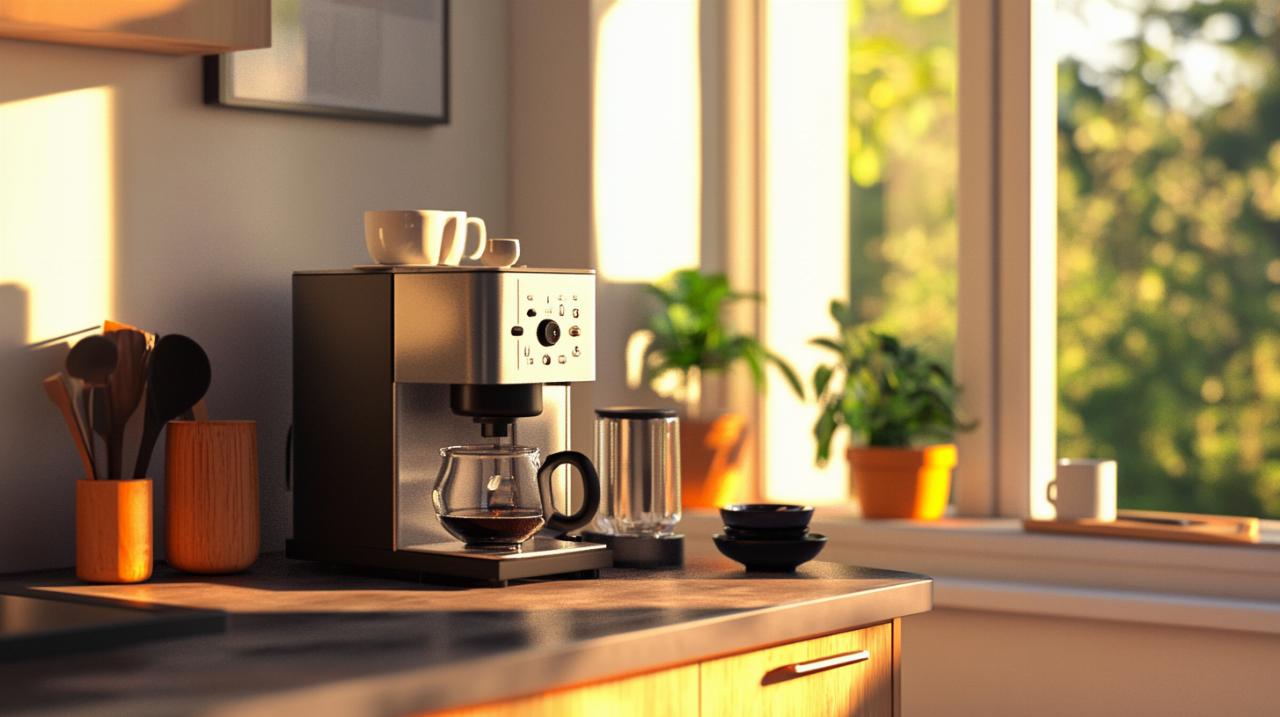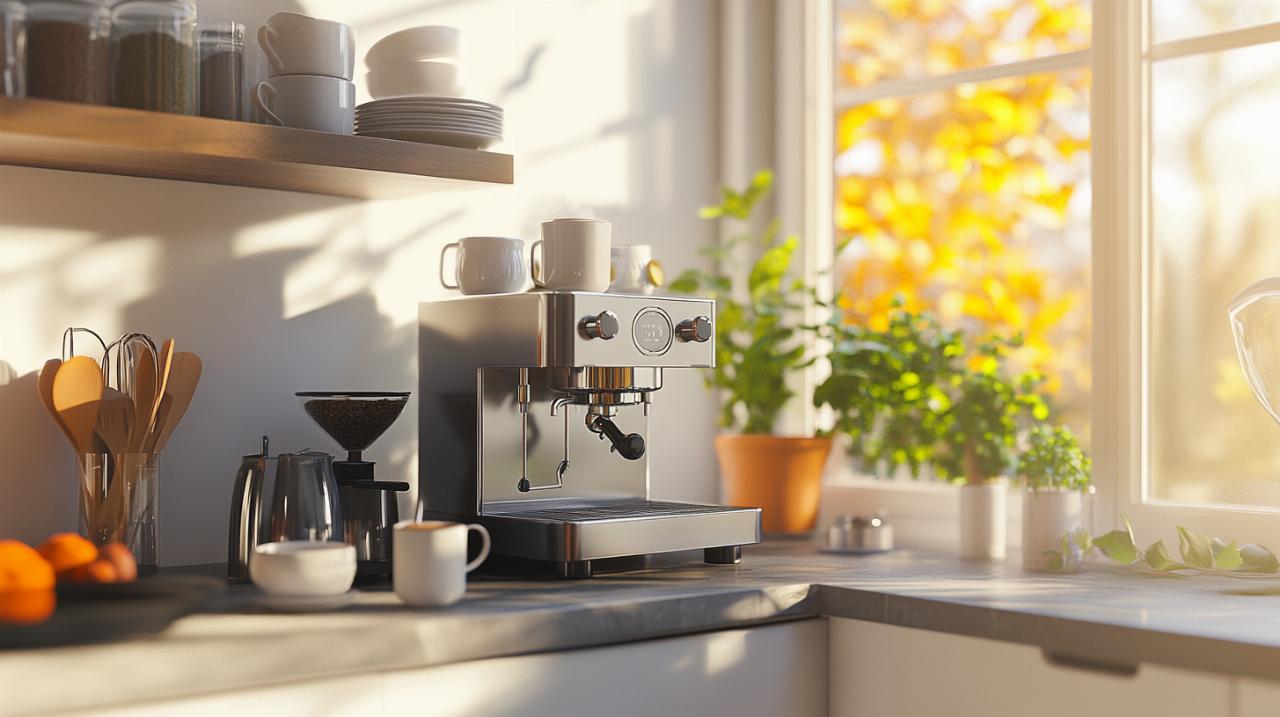For anyone navigating the challenges of a small kitchen or a snug bedsit, the quest for a decent coffee maker can feel like trying to fit a square peg into a round hole. Yet the market has responded with a delightful array of compact, versatile machines that refuse to compromise on taste or functionality. Whether you fancy a quick espresso before dashing out the door or a leisurely cappuccino on a lazy Sunday morning, there are plenty of options designed to deliver café-quality brews without hogging precious worktop real estate. The key is finding a machine that balances footprint, features, and flavour in a way that suits your daily routine and your dwelling's dimensions.
Space-saving designs that don't skimp on quality
When counter space is at a premium, every centimetre counts. Fortunately, many of today's coffee machines are engineered with bijou worktops firmly in mind. Take the Lavazza A Modo Mio Jolie, for instance, which manages to pack a satisfying punch into a frame that measures a mere 600 millilitres in water capacity. Despite its modest dimensions, this pod-based machine has earned praise as one of the best space-saving options available, retailing at around one hundred and sixty-nine pounds. Similarly, the Nespresso Vertuo Pop offers a diminutive 560-millilitre reservoir and a 1260-watt motor, yet it consistently delivers long coffees with a rich crema, all while occupying minimal space. Such designs prove that you need not sacrifice quality for compactness.
Streamlined footprints for bijou worktops
Streamlined footprints are not just about shrinking a machine's width or depth. Thoughtful engineering ensures that essential components, such as drip trays, water tanks, and milk frothers, are integrated seamlessly without adding bulk. The Dualit Espresso Coffee Machine, priced at just under ninety pounds, exemplifies this approach. Its 1.4-litre capacity is generous enough for multiple brews, yet the overall form factor remains unobtrusive. Meanwhile, the Morphy Richards Equip filter coffee machine, a budget-friendly choice at thirty-five pounds, demonstrates that even traditional filter systems can be reimagined for smaller spaces. Its 1.2-litre carafe is perfect for a household of one or two, and the 1000-watt power consumption translates to a mere 1.25 pence per brew, making it both economical and environmentally considerate. The Ajuegosa philosophy of finding joy in simplicity resonates here, as these machines strip away unnecessary frills while preserving the essentials that matter most to coffee lovers.
Multi-functional machines for maximum flexibility
Versatility is another hallmark of compact coffee makers designed for modern living. Multi-functional machines allow you to switch effortlessly between espresso shots, lungo-style pours, and even cold brew options, all from a single appliance. The Ninja Luxe Cafe Pro Series ES701UK, priced at just under seven hundred pounds, is a standout example. With a 2-litre capacity and a 1650-watt motor, it offers a semi-automatic bean-to-cup experience that rivals far bulkier rivals. Its running cost of approximately 1.9 pence per day makes it a sensible long-term investment, particularly for those who appreciate the convenience of grinding fresh beans without cluttering the kitchen with a separate grinder. Similarly, the Sage Barista Touch Impress with Cold Brew capability, retailing at close to one thousand pounds, combines barista-grade espresso with the emerging trend of chilled coffee, all within a footprint that remains manageable. These machines prove that you can enjoy a broad repertoire of brewing styles without surrendering precious worktop territory.
Choosing the Right Compact Coffee Maker for Your Lifestyle
 Selecting the ideal compact coffee maker hinges on understanding your daily habits and preferences. Are you someone who savours a meticulously crafted flat white each morning, or do you prefer the convenience of a quick pod insertion before rushing off to work? The answer will guide you towards either a traditional espresso setup or a pod-based system. Each approach has its merits, and the best choice depends on factors such as taste expectations, budget, and how much time you are willing to invest in preparation and cleaning.
Selecting the ideal compact coffee maker hinges on understanding your daily habits and preferences. Are you someone who savours a meticulously crafted flat white each morning, or do you prefer the convenience of a quick pod insertion before rushing off to work? The answer will guide you towards either a traditional espresso setup or a pod-based system. Each approach has its merits, and the best choice depends on factors such as taste expectations, budget, and how much time you are willing to invest in preparation and cleaning.
Pod systems versus traditional brewing methods
Pod systems have surged in popularity thanks to their sheer convenience. Machines like the Nespresso Vertuo Plus, available for around one hundred and seventy-nine pounds, and the Tassimo Bosch My Way, priced at sixty-nine pounds, deliver consistent results with minimal fuss. The Lavazza Jolie, at ninety-five pounds, is another budget-conscious option that does not skimp on flavour. These machines are ideal for households where simplicity and speed take precedence, and where the additional cost of pods is an acceptable trade-off for the ease of use. On the other hand, traditional brewing methods, particularly bean-to-cup systems, offer a more hands-on experience and often superior taste. The De'Longhi Rivelia, retailing at six hundred and fifty pounds, and the Sage Barista Express Impress, priced at seven hundred and twenty-nine pounds, allow you to grind fresh beans and customise every aspect of your brew. While these machines demand a bit more counter space and a steeper learning curve, they reward enthusiasts with the kind of depth and complexity that pod systems struggle to match. The Smeg Espresso Coffee Machine with Coffee Grinder, available for six hundred and forty-nine pounds, strikes a balance by combining retro aesthetics with modern functionality, making it a popular choice for those who value both form and function.
Maintenance and Cleaning Considerations for Tight Spots
Maintenance routines can be a sticking point when space is limited. Compact machines must be easy to clean, with accessible components that do not require you to dismantle half your kitchen to reach them. The Opal One coffee pod machine, priced at one hundred and nineteen pounds, features a straightforward design that simplifies descaling and daily upkeep. Its 800-millilitre reservoir can be removed and rinsed without awkward manoeuvring, a boon for anyone working within a cramped galley kitchen. Similarly, the Dualit Espressivo Pro, rated at eight out of ten in recent reviews, incorporates removable drip trays and dishwasher-safe parts, ensuring that even the most thorough cleaning sessions do not become a chore. For bean-to-cup machines, regular descaling and the occasional replacement of brewing units are part and parcel of ownership. The Gaggia Magenta Plus, which earned a nine out of ten rating, includes automated cleaning cycles that take much of the guesswork out of maintenance. Meanwhile, the KitchenAid KF8 Fully Automatic Espresso Machine, though positioned at the premium end at one thousand eight hundred and ninety-nine pounds, offers a self-cleaning milk system that is particularly valuable for those who enjoy lattes and cappuccinos made with plant-based milks. Running costs are another consideration. The De'Longhi La Specialista Touch, for instance, costs around 2.4 pence per day to operate, based on average UK electricity rates of 28.62 pence per kilowatt-hour. In contrast, the Dualit Espresso Machine runs at just 0.9 pence per day, making it one of the most economical options for budget-conscious coffee drinkers. By weighing these factors alongside your spatial constraints, you can identify a compact coffee maker that not only fits your kitchen but also harmonises with your lifestyle and wallet.

Comments are closed